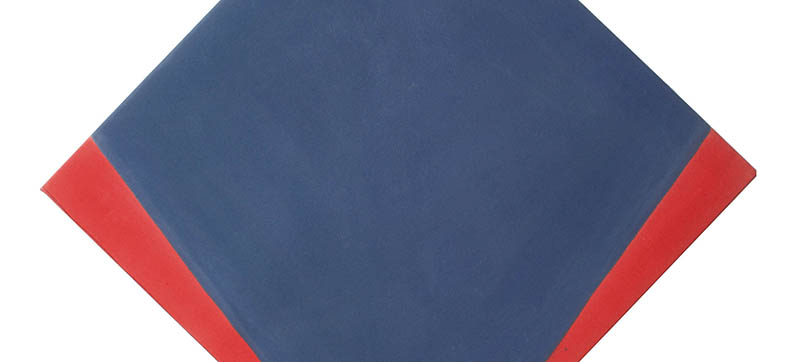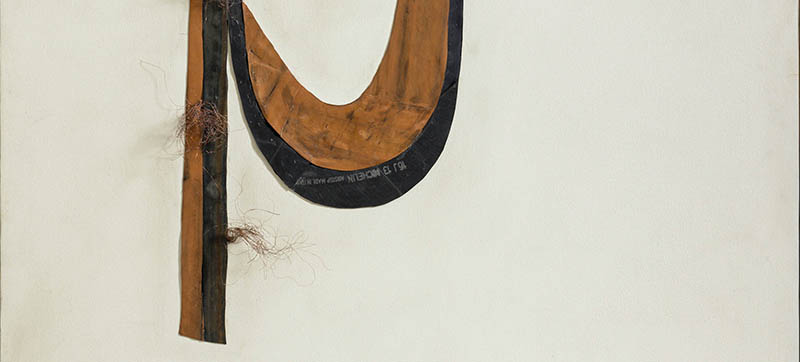The art of the Twentieth century has often witnessed the crossing of paths of artists and art movements – often possessing distant connections between them yet united by the mutual desire to explore those hidden spaces of the human soul. Beyond any hint of ideologies, the human soul is reflected and is questioned within the artistic expressions of a present that is increasingly more uncertain and disharmonious.
So Carol Rama, throughout her long and fertile experience, as a woman and as an artist, was an eccentric and many-sided personality. She evolved from her beginnings in Turin in the 1930’s (at that time a pupil who attended the atelier of Felice Casorati, a cultural meeting-place for an Italian milieu that produced authentic talents at a European and international level) and was painting watercolours by the middle of the 1940’s. Her works contained day-to-day objects that burst onto her canvasses and became true works of art. Although the expressionist influence of Egon Schiele might appear more than evident along with similar dadaist influences of Marcel Duchamp, Man Ray and Hans Bellmer, Carol Rama however privileged her interest in the human body and a femminist sensuality that came before its time. Her style was highly original and over the course of the following thirty years she undertook a solitary professional path that took her to the origins of expression itself, a place where image and poetry became part of a greater whole. At the beginning of the 1970’s, Carol Rama, working, as she was, with the gallery, “La Bussola” in Turin, began using the air tubes inside the wheels of bicycles, motorbikes and cars, all cut up and applied to the canvas thus creating a very particular and exceptionally personal colour scheme, giving a burst of life to her works and lending them a superb pictorial quality. This produced a visual and a tactile effect that was similar to human skin, as in her La guerra è astratta (“War is Abstract”) from 1971.
A further prominent figure is represented by Kenneth Noland, one of the most important exponents of minimalist art in America from the 1950’s to the 1960’s on account of his abstract canvases inhabited by geometric forms that resonate colour and life-giving energy as in this canvas from 1963 entitled 10 May. The artist is part and parcel of his work and his style mingles with the assymetrical and modelled sides of his canvases in which the spectator might perceive the rigour in the works of Piet Mondrian and Paul Klee and, for the colour, Joseph Albers. However, his palette is more jovial and irreverent yet extremely refined in terms of how he controlled the integrity of his colour. In 1977, the Salomon R. Guggenheim Museum of New York celebrated him with a single-artist exhibition and his works are at the Kustmuseum in Basle, at the MOMA and the Whitney in New York, at the Pompidou in Paris, at the Stedelijm Museum in Amsterdam and at the Tate Gallery in London.
Last but not least, let us not forget an interesting little oil tondo from1950 by Giorgio De Chirico. In his Cavaliere all’assalto, the artist, playing with this small and relatively unusual format, was able, with just a few vigorously dealt and talented brush-strokes, to create a spiral of colour in motion.

Kenneth Noland 10 May, 1963
olio su tela
Stima € 80.000 – 120.000

